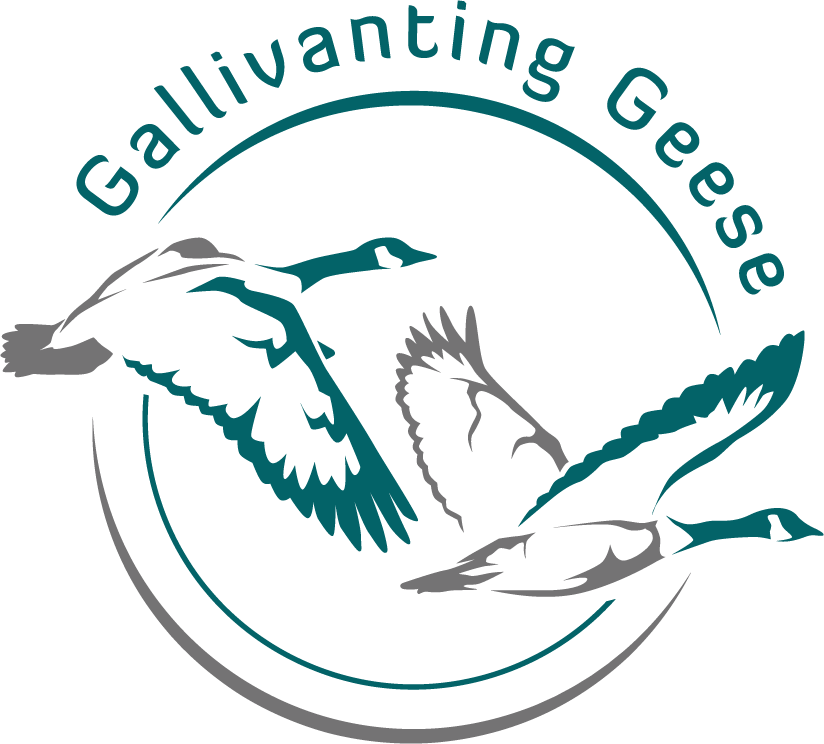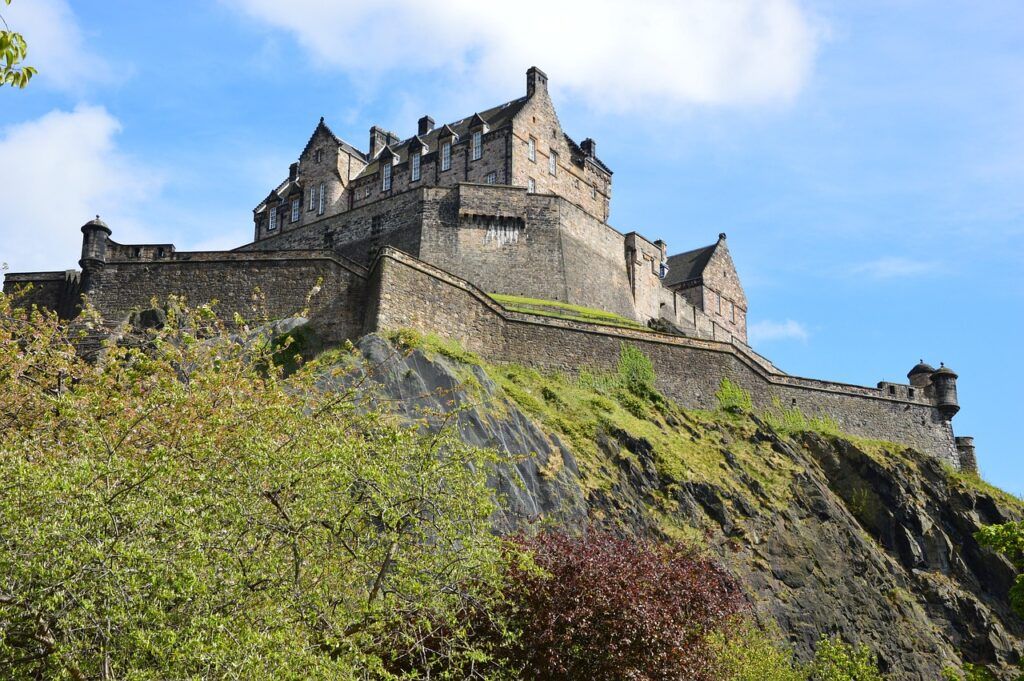Castles have always held a special place in my heart, sparking my enduring passion for history.
In my youth, and still today, I was captivated by their grandeur, particularly the resilience of those ancient stone structures, like the pyramids, that have stood the test of time.
Seeing and perhaps even reaching out to touch a building that has stood for hundreds or thousands of years always fills me with profound reverence and respect.
This feeling extends not only to the structure itself but also to the individuals who constructed it and the rich history it has borne witness to throughout its existence.

During my first visit to Scotland, I prioritized a guided tour of Edinburgh Castle, recognizing its profound historical significance. Engaging with a knowledgeable tour guide proved invaluable, as they provided insights and details I might have overlooked in my initial excitement.
Our tour group convened near St Giles Cathedral on the Royal Mile. After introductions with our guide, we embarked towards the castle.
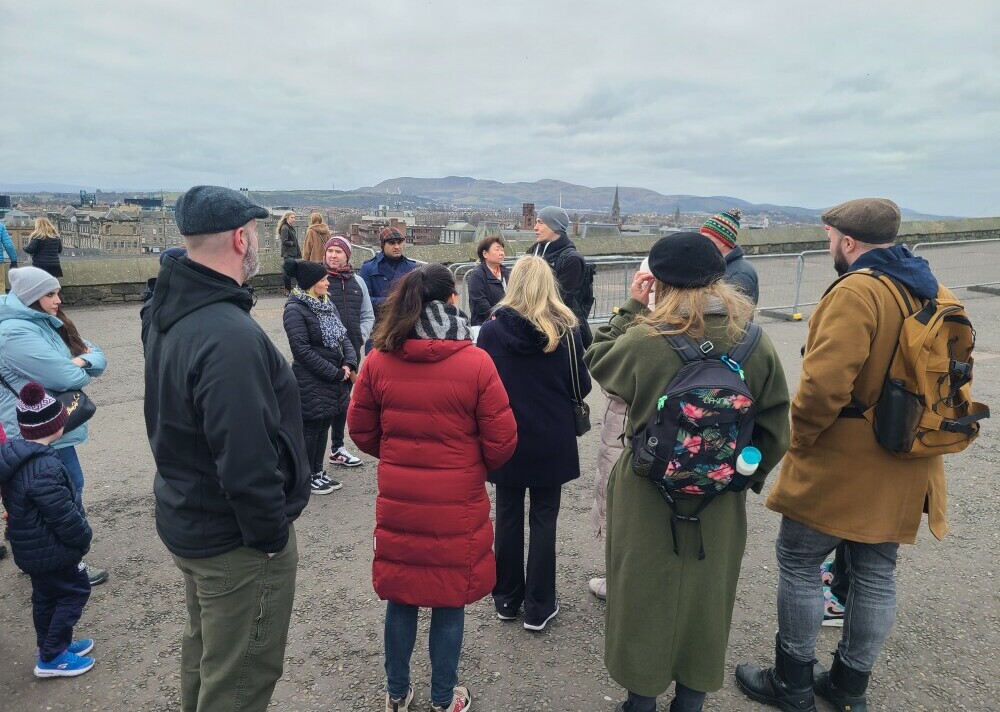
Time Honored Fortress
Edinburgh Castle stands as one of Europe’s most ancient fortified sites. Its extensive history spans periods as a royal residence, military stronghold, prison, and fortress, echoing countless captivating stories.
Acknowledging its strategic importance, the ancient Iron Age residents erected a hill fort on this rock. Sitting majestically atop its imposing perch, the castle’s military significance is undeniable.
Ascending Castle Hill, you’ll tread the same paths once trodden by soldiers, monarchs, and even the occasional pirate.

In addition to preserving significant historical events, the castle has endured numerous sieges throughout its history and holds the distinction of being the most besieged place in all of Great Britain.
Amidst the Wars of Independence, it exchanged hands multiple times. In 1314, the Scots reclaimed the castle from the English in a bold nocturnal assault orchestrated by Thomas Randolph, the nephew of Robert the Bruce.
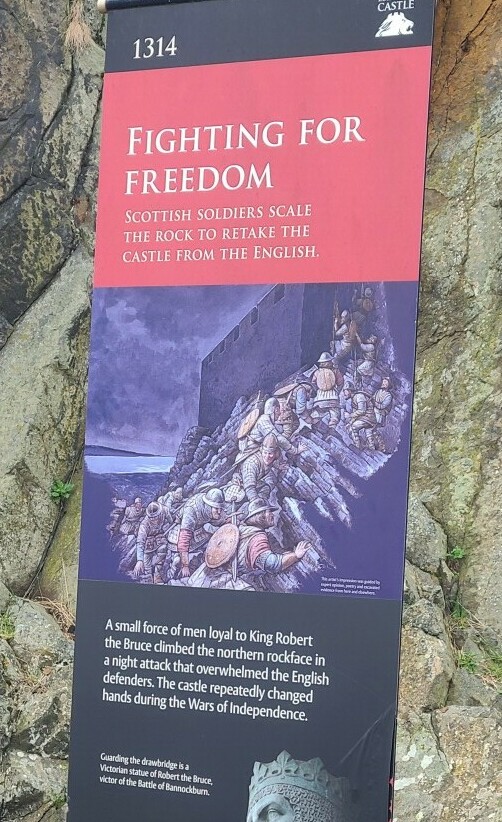
Over centuries, the castle’s defenses have undergone significant evolution. Among these advancements, Mons Meg, hailed as one of the most formidable medieval cannons, was bestowed upon King James II in 1457.
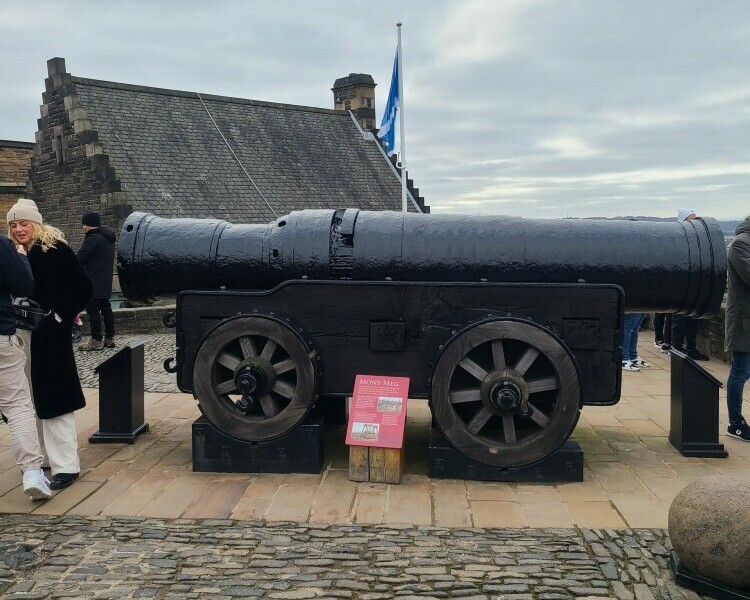
Following the Lang Siege of 1573, the Half Moon Battery was constructed and equipped with bronze cannons, famously referred to as the Seven Sisters, guarding its ramparts for two centuries.
Additionally, six guns fortify the Argyle Battery, providing a vigilant defense with its expansive view to the north.
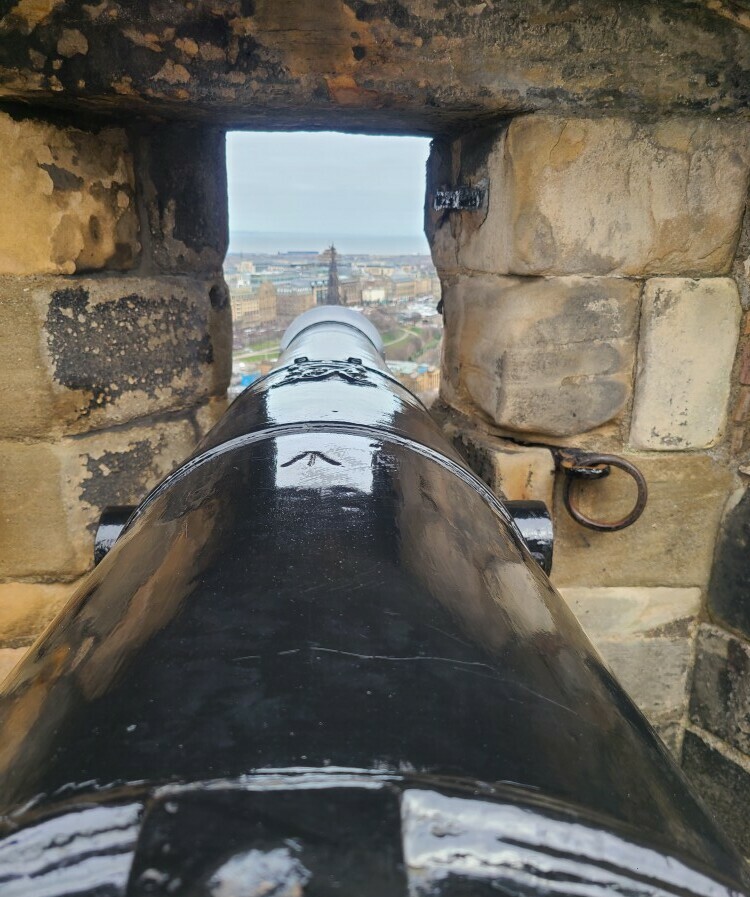
Monarch’s Abode and Armed Bastion
Edinburgh Castle was also a regal abode for centuries and witnessed Queen Margaret’s passing in 1093. Her son, King David I, constructed St. Margaret’s Chapel, Edinburgh’s oldest building, in her honor. Today, it still hosts weddings and christenings.
During our tour, we were fortunate to witness a wedding party assembling at the chapel, accompanied by the melodic tunes of a bagpiper.
The Great Hall, built in 1511 for King James IV, hosted grand events. Yet, James IV perished at the Battle of Flodden in 1513.
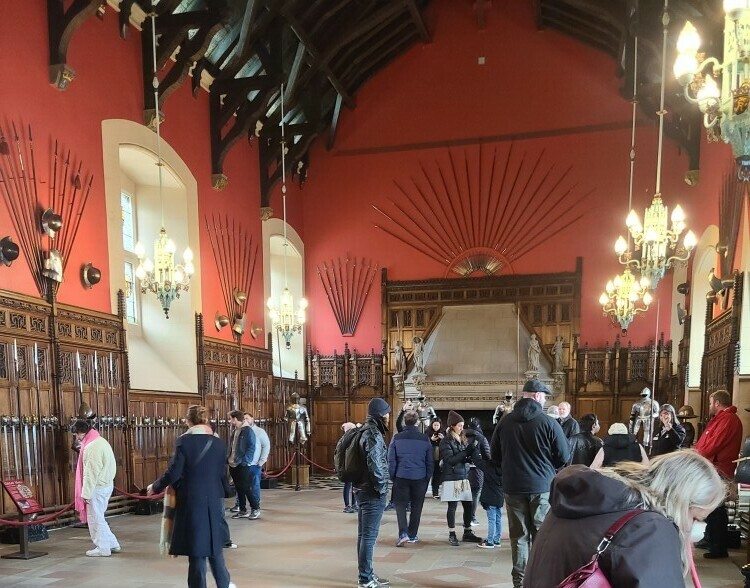
Above the Royal Palace door, gilded initials “MAH” signify Mary Queen of Scots and Henry Stewart, Lord Darnley.
In 1566, Mary gave birth to James VI, who later united the crowns of Scotland and England in 1603.
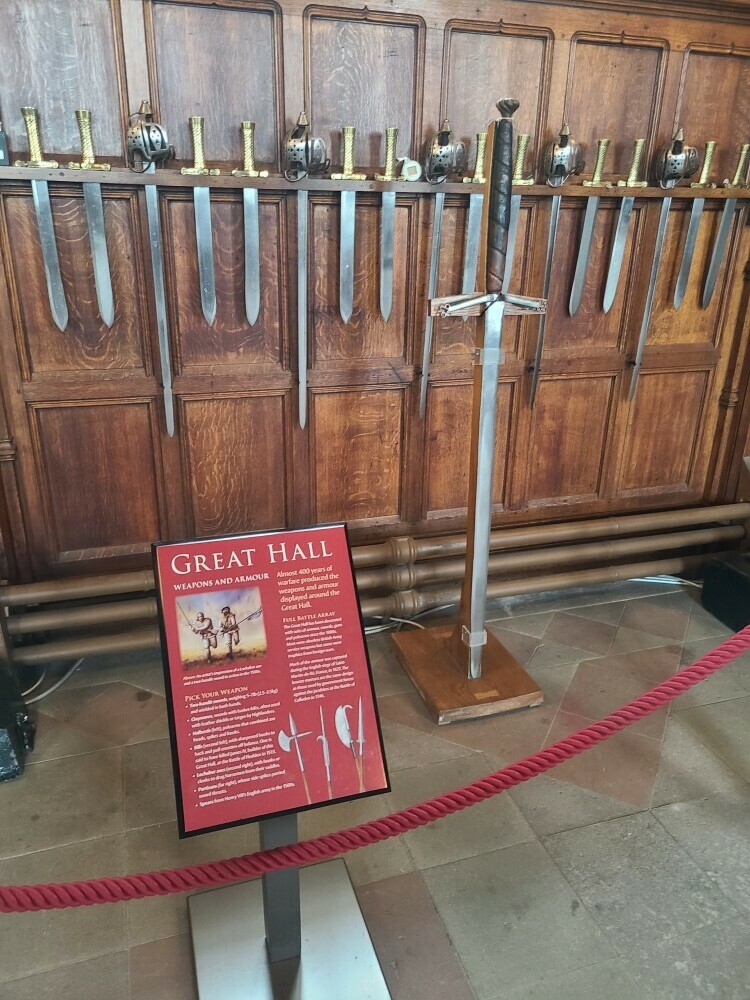
The Honours of Scotland, Britain’s oldest Crown jewels, were crafted during the reigns of James IV and James V.
This set, including a crown, scepter, and sword, debuted in 1543 during Mary Queen of Scots’ coronation. Photos of the Crown jewels were strictly prohibited so Amy snapped a quick photo of this plaque instead.
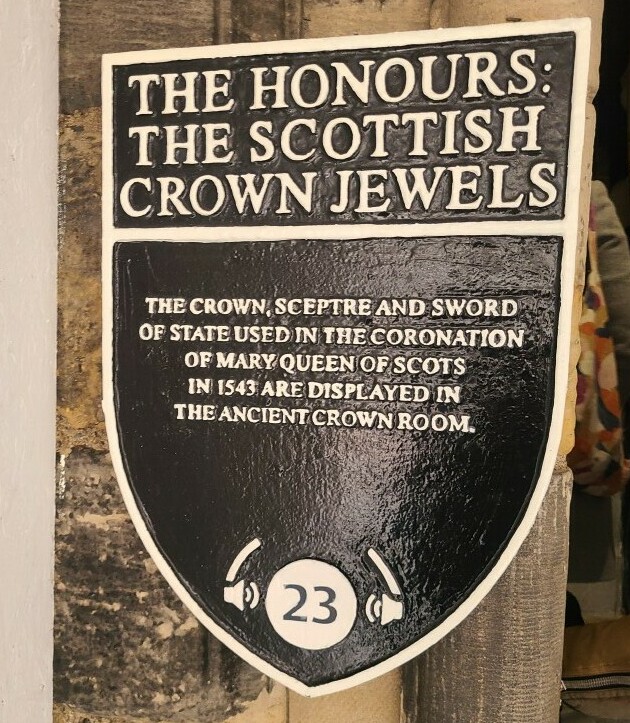
Following the 1603 ‘Union of the Crowns’, Edinburgh Castle saw fewer royal visits, transforming into a vital military base from the 1650s.
Fortifications were reinforced due to the Jacobite Risings (1689–1746). New additions like Dury’s Battery and the Queen Anne Building accommodated troops and officers.
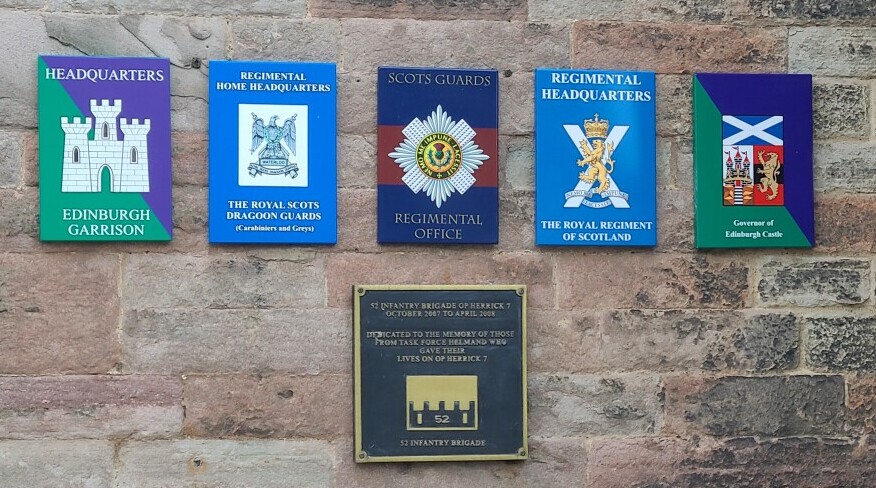
During the Napoleonic Wars, the New Barracks housed 600 soldiers and remains operational to this day. Despite royal complaints about drafts, life was harsh for many prisoners confined in the vaults beneath Crown Square, making the castle Scotland’s most secure prison from 1757 to 1814.
OK, That’s Enough History
Though I could continue sharing numerous historical facts about this magnificent castle, I’d hate to spoil any surprises for future tours you might embark on.
Although you could dedicate an entire day to exploring and uncovering the castle alone, I strongly advocate for a guided tour. The insights a knowledgeable guide offers surpass what you can glean from mere plaques on the walls.
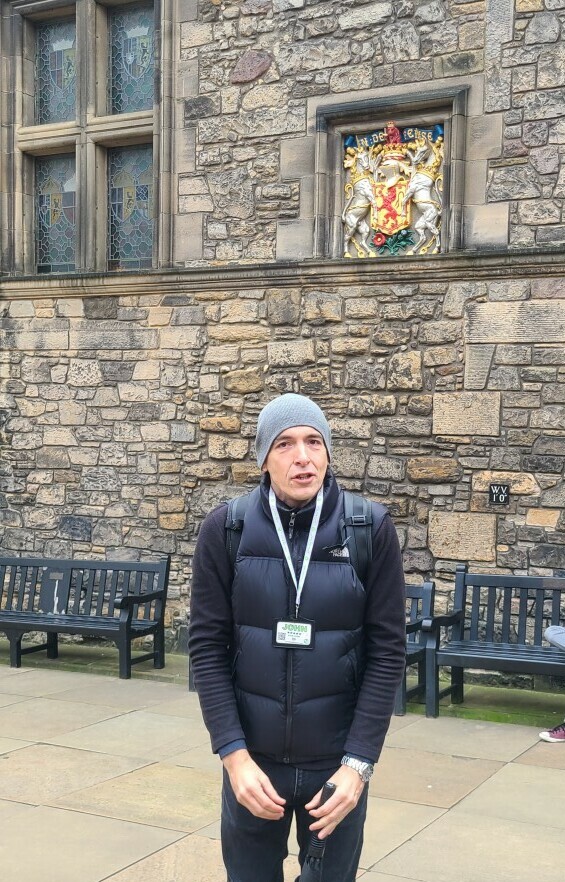
Our guide infused the castle’s history with enjoyable anecdotes and personalized touches, elevating the experience beyond a typical history lesson. His lively energy and enjoyable personality enhanced the entire experience.
The tour proceeded at a leisurely pace, methodically covering every part of the castle and addressing each question comprehensively. It struck the ideal balance between a structured tour filled with facts and stories and a relaxed exploration at our own pace.
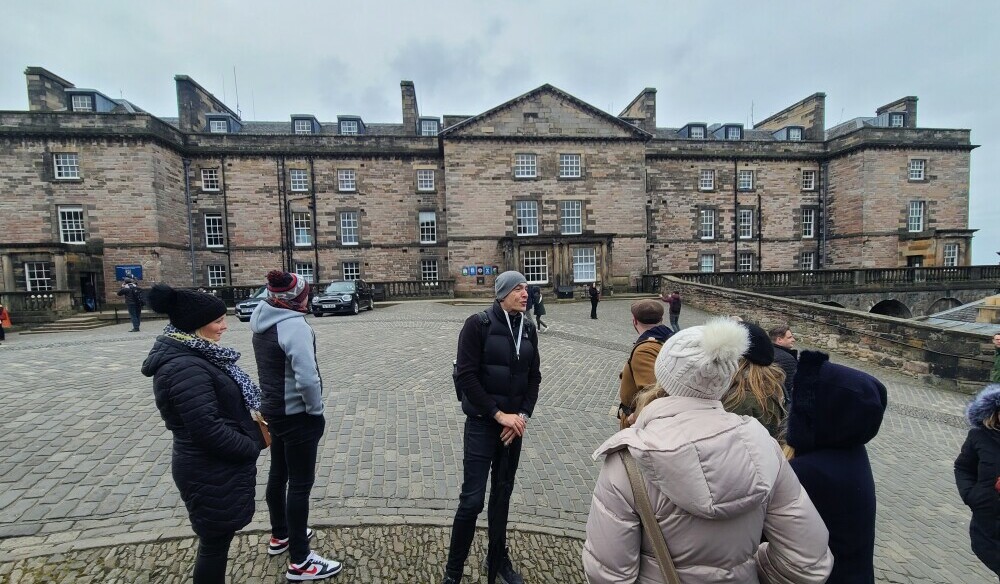
In addition to delving into the castle’s history, we found numerous shops selling souvenirs and whisky chocolate plus a restaurant where Amy and I indulged in a delightful “high tea” experience. I was familiar with “afternoon tea” in Great Britain, but high tea was new to me.
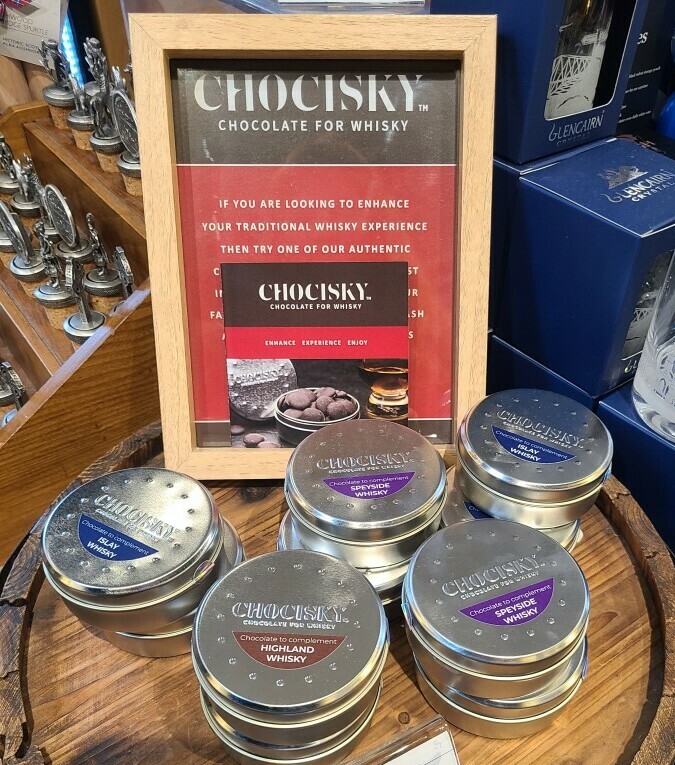
It usually indicates a more substantial meal, commonly enjoyed in the late afternoon or early evening. This array often comprises sandwiches (referred to as “sarnies” by a local I spoke to), savory snacks, cakes, and, naturally, tea, all served at a dining table.
All the food was delectable and the tea served as the ideal afternoon pick-me-up.

Venturing Out Independently
The guided segment of our tour concluded just before high tea. We had the remainder of the day to wander the castle grounds at our leisure. We retraced our steps at a relaxed pace, capturing even better photos along the way while soaking in the sights.
One highlight for me was delving into the military prison and dungeon. Naturally, I stumbled upon even more historical tidbits that piqued my interest.
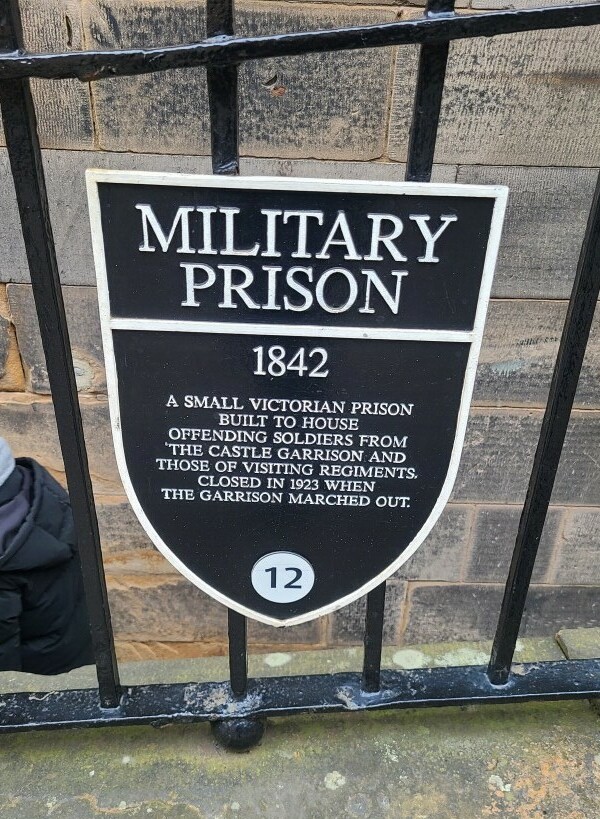
In addition to a vivid portrayal of the conditions prisoners endured during their time of confinement, I was pleasantly surprised to learn that the castle’s history even intertwined with the American Revolution.
The most intriguing fact was that one of the earliest depictions of the American flag was carved into a door by a sailor who was held captive there. Remarkably, this carving remains visible on the door to this day.
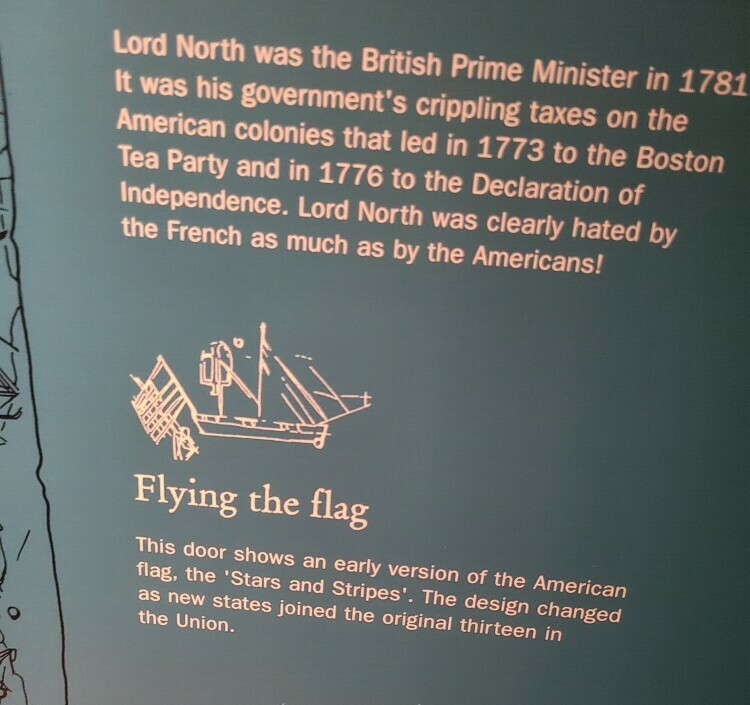
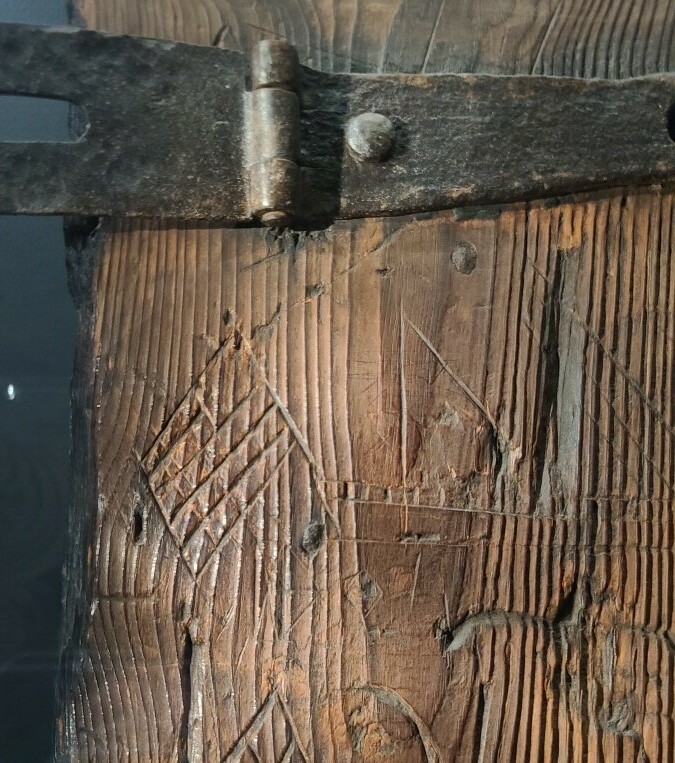
The Edinburgh Military Tattoo
In the initial stages of our tour, our guide brought up the Edinburgh Military Tattoo, prompting Amy to conduct online research shortly afterward.
Every summer for almost the entire month of August, the castle welcomes the awe-inspiring annual extravaganza, showcasing a mesmerizing fusion of music, dance, and military grandeur.
This remarkable event features captivating performances by military bands, drill teams, and a diverse array of talented performers. All of it unfolding right at the castle’s entrance.
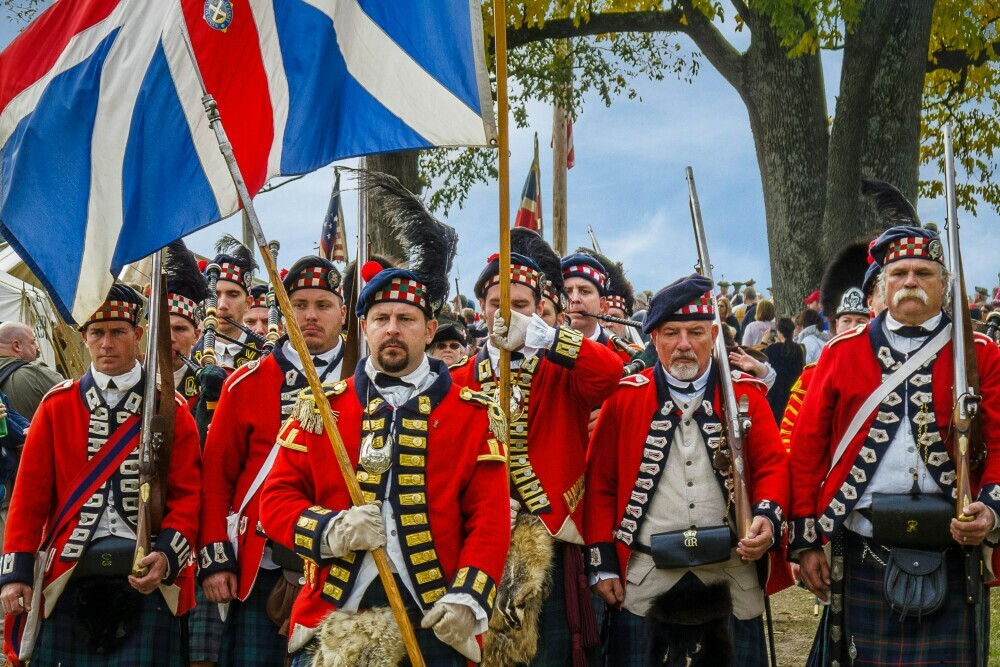
The event boasts of blending tradition with contemporary flair. It honors British Military and Scottish heritage through innovative lighting projections and state-of-the-art sound technology, all set against the breathtaking backdrop of Edinburgh Castle.
While we’ve always found reasons why we should revisit Edinburgh, the military tattoo certainly adds an extra allure!
Resilient Grandeur
Edinburgh Castle stands as a timeless emblem of resilience and history. Its grandeur and rich tapestry of stories captivated Amy and me, offering a profound journey through centuries of Scottish heritage.
Undoubtedly, it ranks among the finest historical experiences I’ve had abroad. Plus, it’s a fantastic castle to visit and delve into. Every corner revealed fresh insights into its past, with tales that brought history to life beyond the pages of a book.
I eagerly anticipate revisiting it soon and discovering more of the magnificent castles scattered across the British Isles.

